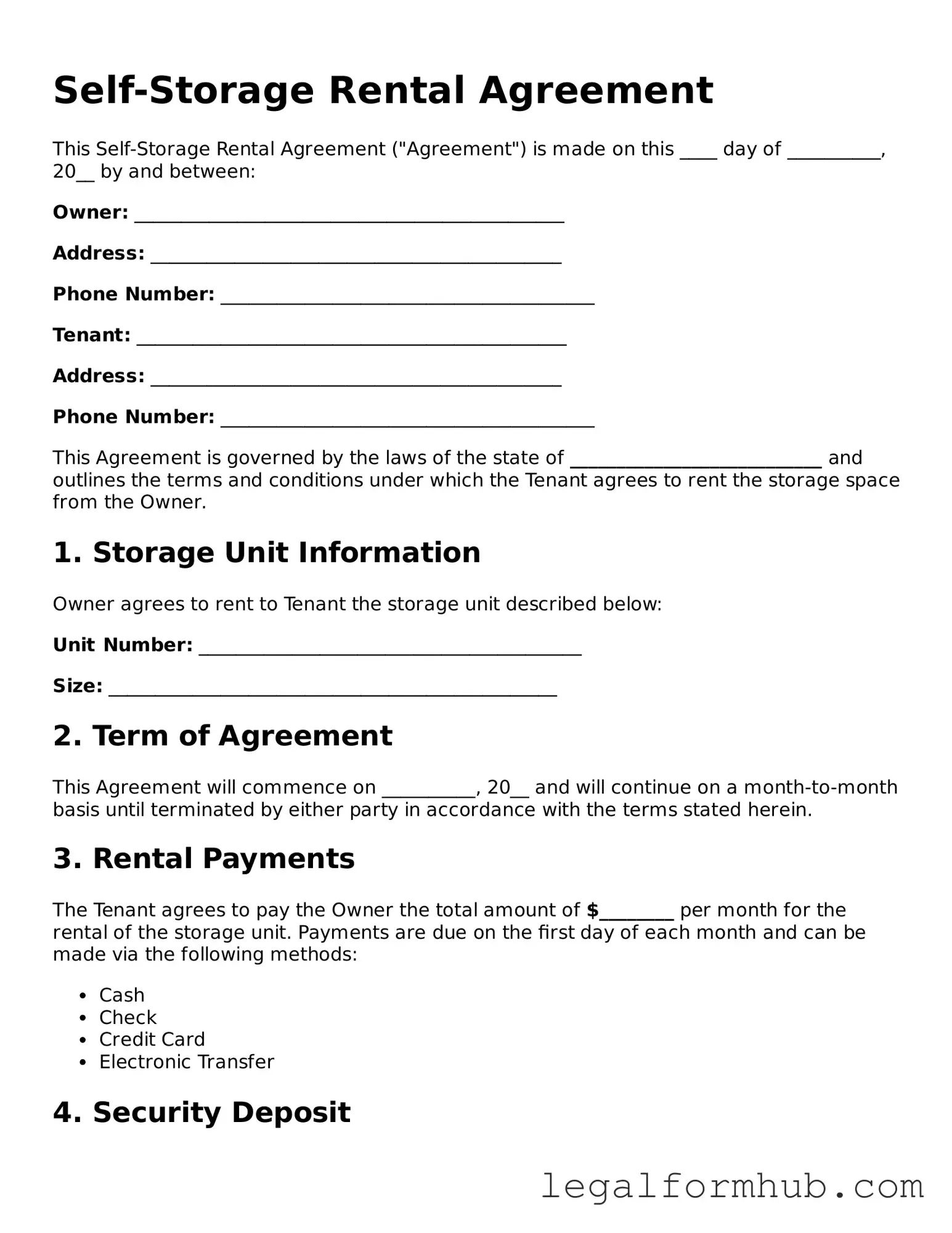The Lease Agreement is a document that outlines the terms under which a landlord rents property to a tenant. Similar to the Self-Storage Rental Agreement, it specifies the duration of the rental period, payment terms, and responsibilities of both parties. Both agreements serve to protect the interests of the landlord or property owner while ensuring that the tenant understands their obligations. Clarity in these documents is essential to prevent disputes during the rental period.
The Rental Application is another related document. It is often completed by potential tenants to provide the property owner with essential information. Like the Self-Storage Rental Agreement, the Rental Application collects personal details, references, and financial information. This document helps landlords assess the suitability of applicants before entering into a rental agreement, ensuring a smooth rental process for all parties involved.
A Commercial Lease Agreement is similar to a Self-Storage Rental Agreement but is specifically tailored for business use. It outlines the terms under which a business rents space for operations. Both documents detail rental terms, payment schedules, and maintenance responsibilities. The primary difference lies in the intended use of the rented space, with the commercial lease focusing on business needs while the self-storage agreement centers on personal or business storage solutions.
The Vehicle Storage Agreement is another document that shares similarities with the Self-Storage Rental Agreement. This agreement outlines the terms under which a vehicle is stored in a designated space. Like the self-storage agreement, it specifies the duration, fees, and responsibilities regarding the care of the stored vehicle. Both documents aim to protect the interests of the storage provider while ensuring that the customer understands their rights and obligations.
The Equipment Rental Agreement is also akin to the Self-Storage Rental Agreement. It governs the terms under which equipment is rented out to a customer. Both documents include details about the rental period, fees, and the condition of the item being rented. This agreement ensures that both parties are clear about their responsibilities, including maintenance and liability for damages, fostering trust and accountability.
Using the appropriate forms, such as a Lease Agreement, can significantly enhance the renting experience for both landlords and tenants. For those unfamiliar with the specifics, a helpful resource is available at nytemplates.com/blank-lease-agreement-template, providing templates that can simplify the process of creating a solid agreement.
A Boat Storage Agreement is similar in nature to the Self-Storage Rental Agreement, specifically for the storage of boats. It outlines the terms for storing a boat in a designated facility, including payment terms and duration. Both agreements prioritize the protection of the property being stored while also detailing the responsibilities of the owner and the storage provider, ensuring a smooth transaction.
The Mobile Home Park Rental Agreement resembles the Self-Storage Rental Agreement in that it outlines the terms of renting space for a mobile home. It includes details about rent, utilities, and maintenance responsibilities. Both documents serve to protect the rights of the property owner while clearly communicating the expectations and obligations of the tenant, thereby minimizing potential conflicts.
The Residential Lease for a single-family home is another document that shares common elements with the Self-Storage Rental Agreement. This lease outlines the terms for renting a home, including duration, rent, and maintenance responsibilities. Both documents emphasize the importance of clear communication between landlord and tenant, ensuring that both parties are aware of their rights and obligations throughout the rental period.
The Tenant Agreement is also similar to the Self-Storage Rental Agreement. It details the terms and conditions under which a tenant occupies a rental property. Like the self-storage agreement, it specifies rental amounts, duration, and responsibilities of both the tenant and the landlord. This document is crucial for establishing a mutual understanding and protecting the rights of both parties involved.
Finally, the Storage Unit Agreement is a direct counterpart to the Self-Storage Rental Agreement. It outlines the specific terms for renting a storage unit, including payment, duration, and access rights. Both documents are designed to ensure that the customer understands their rights while also protecting the storage facility's interests. Clear terms in these agreements help to prevent misunderstandings and disputes.
